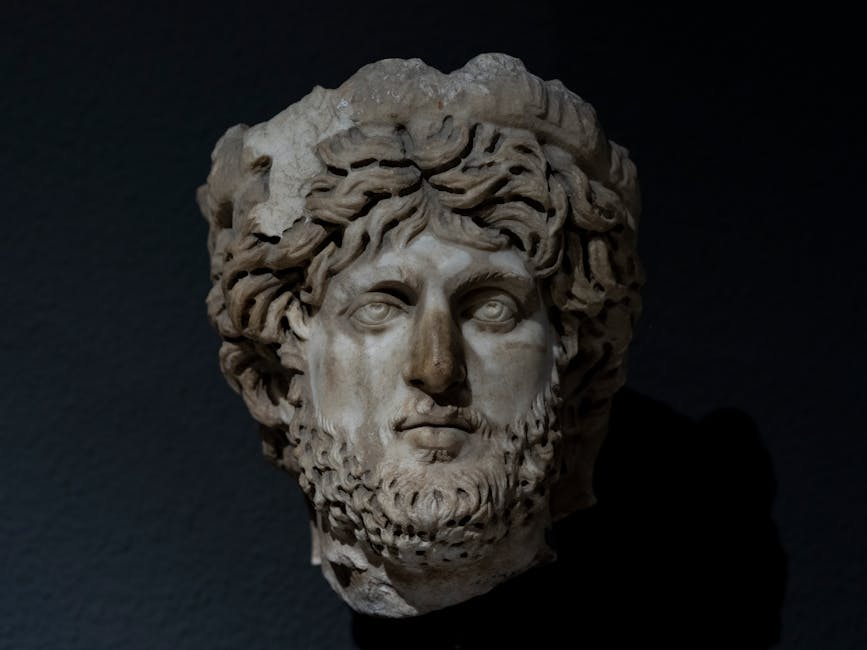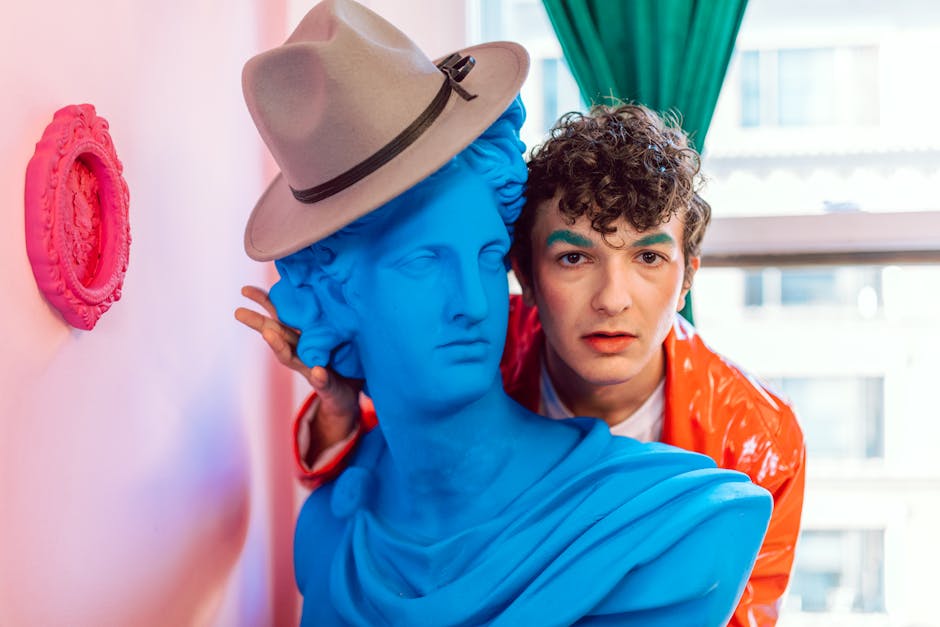Neoclassical and Modern portraiture offer a window into the evolution of artistic expression, reflecting shifts in societal values and technological advancements. These styles, though distinct, share a common thread of capturing the essence of their times through the portrayal of human subjects.
Origins and Influences of Neoclassical Portraiture
Neoclassical portraiture emerged in the 18th century as artists turned back to classical ideals. Johann Joachim Winckelmann, a German art historian and archaeologist, played a key role in this shift, promoting the superiority of Greek art. His writings inspired artists to adopt a more structured and idealized aesthetic.
The Enlightenment's intellectual momentum and excavations at ancient sites like Pompeii and Herculaneum fueled the Neoclassical movement. These discoveries offered artists firsthand glimpses into the ancient world, inspiring them to interpret classical virtues through a modern lens.
Neoclassical portraiture began to reflect a society longing for order, as seen through balanced compositions and idealized forms. Artists like Antonio Canova exemplified this return to classical beauty, creating works that embodied clarity and simplicity. Through this blend of past and present, Neoclassical portraiture offered viewers a glimpse into an era that revered the philosophies of long-gone cultures.

Characteristics of Neoclassical Portraiture
Neoclassical portraiture is distinguished by its emphasis on harmony, clarity, and idealism. It captures the essence of moral virtue, portraying subjects with an aura of order and rationality. Unlike its more flamboyant predecessors, Neoclassical portraiture calls for subdued elegance, nodding to the measured perfection of antiquity.
Subjects are often depicted with serene determination, their features molded by ideals of proportion and balance. Faces carry not just physical likeness but an archetypical representation of reasoned humanity. The mood is contemplative, capturing a sense of duty and wisdom rather than intense emotion.
Composition is constructed with careful attention to geometric harmony, celebrating symmetry and proportion. Artists employed a restrained palette, often opting for softer hues and delicate contrasts that highlight the sculptural quality of their subjects. Clothes are draped reminiscent of classical attire, adding historical reverence to the composition.
In Neoclassical portraiture, each element serves to bring into sharper focus the dignity of the depicted figures. It embodies the Enlightenment's intellectual pursuits, speaking to an era's desire to look to the past for guidance in addressing the complexities of their present.
Transition to Modern Portraiture
The transition from Neoclassical to Modern portraiture marks a shift where structured grace gave way to individual expression and emotional honesty. Modern portraiture emerged as an exaltation of individuality, unbound by previous conventions.
Artists sought out new terrain, rejecting the strictures of symmetry and geometric harmony. The canvas became a playground of experimentation, where light, shadow, and form were no longer confined by tradition. This new approach celebrated the inner complexity of the human spirit.
Technological advancements, particularly photography, catalyzed this shift. With reality easily captured by a lens, painting became more about exploration than documentation. This encouraged artists to reflect their subjective visions rather than objective truths.
Societal changes, such as the Industrial Revolution, further fueled this transition. Artists became participants in a rapidly evolving world, focusing on new urban landscapes, raw human emotions, and explorations of identity.
The Impressionists embodied this spirit of experimentation, capturing felt moments rather than visible reality. Artists like Monet, Turner, and Van Gogh showcased how art was transcending its boundaries, evolving into a complex dialogue between artist and viewer.
Modern portraiture represents an evolution reflecting a world embracing change and imagination. It challenges us to move beyond safe archetypes, making space for diverse stories and perspectives.
Characteristics of Modern Portraiture
Modern portraiture breaks from Neoclassical constraints, embracing self-expression and abstraction. Artists became storytellers of their inner worlds, capturing the essence of subjects through color, form, and movement. Portraits reflect both the subject's mind and the artist's personal lens.
Technological advancements brought new materials and techniques, broadening artistic possibilities. Synthetic paints, vibrant colors, and experimental methods like collage redefined canvases. These innovations allowed artists to convey emotional weight and psychological depth, adding a tactile dimension to their works.
Modern portraiture flourishes as a diverse patchwork of styles and movements. From Fauvism's bold colors to Cubism's fragmented forms, each style defies limitation. Consider Picasso's distorted faces or Kandinsky's vibrant abstractions—each embodies a unique shift from realism to a more abstract world.
In contrast to Neoclassical ideals, modern portraits vibrate with energy and spontaneity. They capture transient emotions through disjointed lines, surrealist dreamscapes, and impressionistic hues. These artworks embrace imperfections and the dissonance of real life, allowing raw emotionality to guide the artist's hand.
Modern portraiture celebrates change and authenticity, inviting us to question the facets of human identity. It's an exciting venture into the unknown, affirming that art's boundaries are constantly shifting, shaped by the human spirit.
Impact of Neoclassical and Modern Portraiture
Neoclassical and Modern portraiture continue to influence contemporary art, illustrating how past movements shape current creative endeavors. Artists still draw inspiration from both paradigms, weaving classical and modern elements into their unique expressions.
Neoclassicism's impact is seen in the ongoing quest for harmony and idealism in some artistic circles. Some artists return to classical ideals, incorporating balance and technical mastery into their work. This nod to the past reflects a desire for simplicity and clarity in an increasingly complex artistic landscape.
The philosophical underpinnings of Neoclassical art—its reverence for virtue and reason—continue to resonate. Contemporary artists often explore morality and human dignity in their works, echoing the emphasis on character that dominated Neoclassical canvases.
Meanwhile, Modern portraiture's legacy of bold originality and unrestrained creativity persists. It encourages today's artists to explore themes of identity, gender, race, and the human psyche in innovative ways. The expressive styles and conceptual boldness inherent to modern portraiture empower artists to challenge preconceived notions and engage in fearless exploration.
In contemporary art, both Neoclassical ideals of symmetry and moral clarity and the modern quest for authentic self-expression coexist. Together, they forge a dialogue between past and present, fueling the dynamism of current portraiture. These intertwined legacies remind us of the limitless potential within artistic creation—a dance where classical precision and modern freedom contribute to the ever-evolving story of art.

The enduring impact of Neoclassical and Modern portraiture lies in their ability to bridge past ideals with contemporary creativity. They remind us that art is a continuous dialogue, where tradition and innovation coexist, shaping our understanding of humanity through each brushstroke.
- Winckelmann JJ. Thoughts on the Imitation of Greek Works in Painting and Sculpture. 1755.
- Sontag S. On Photography. New York: Farrar, Straus and Giroux; 1977.
- Koch S. Stargazer: The Life, World and Films of Andy Warhol. New York: Marion Boyars; 1985.
- West B. The Death of General Wolfe. 1770.
- David J-L. Oath of the Horatii. 1784.
- Ingres J-A-D. La Grande Odalisque. 1814.






















